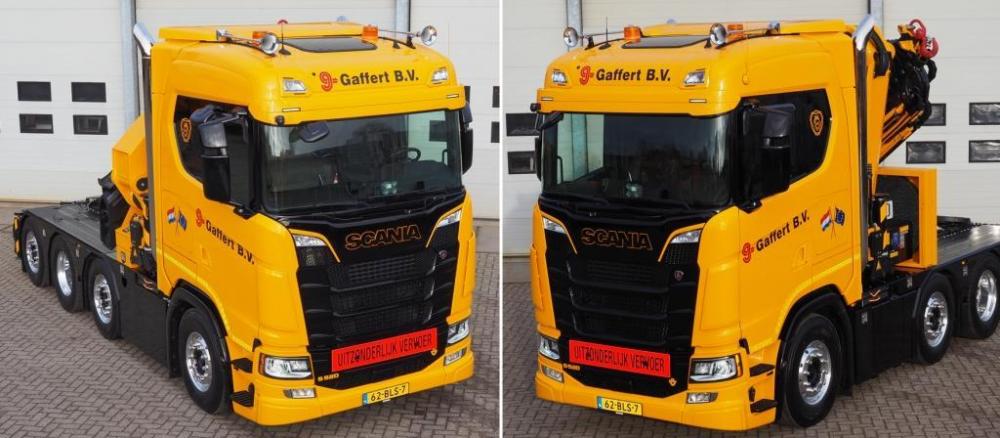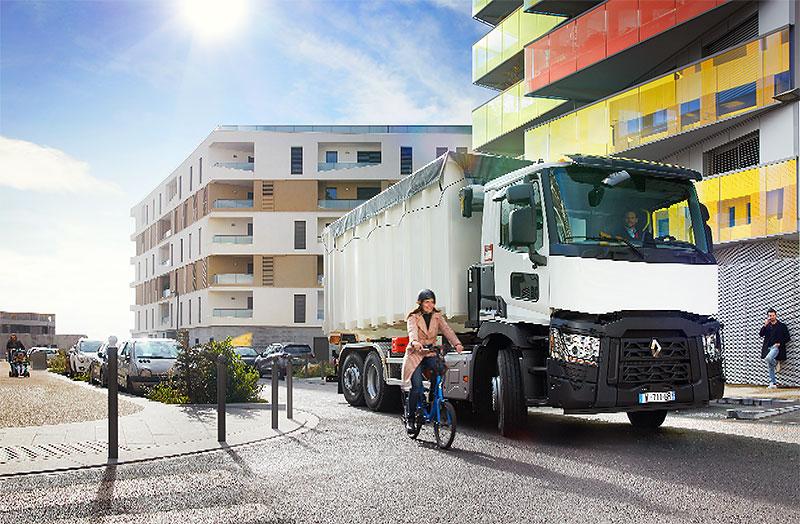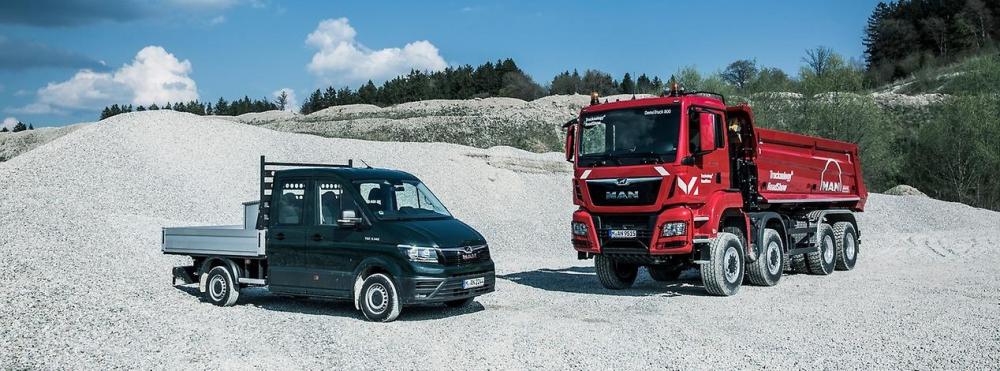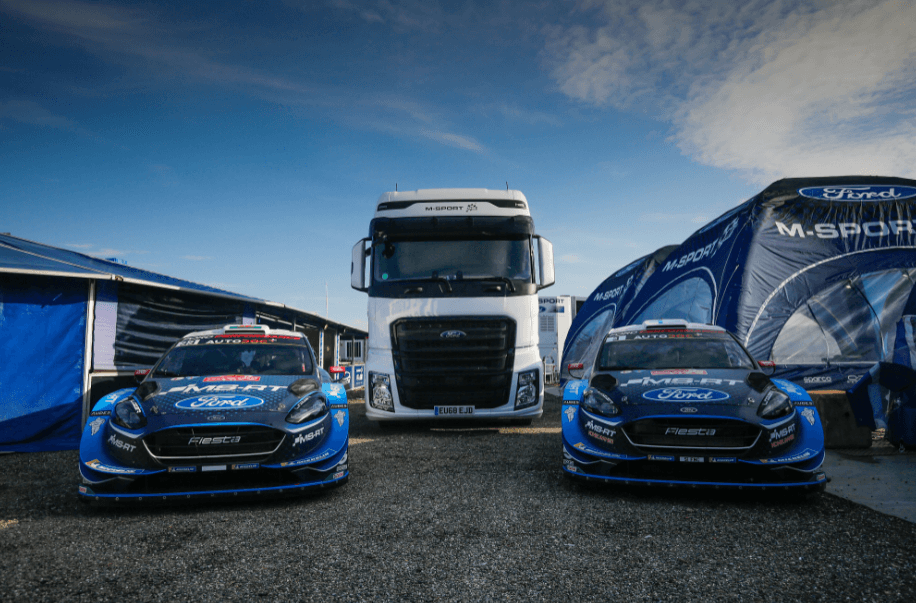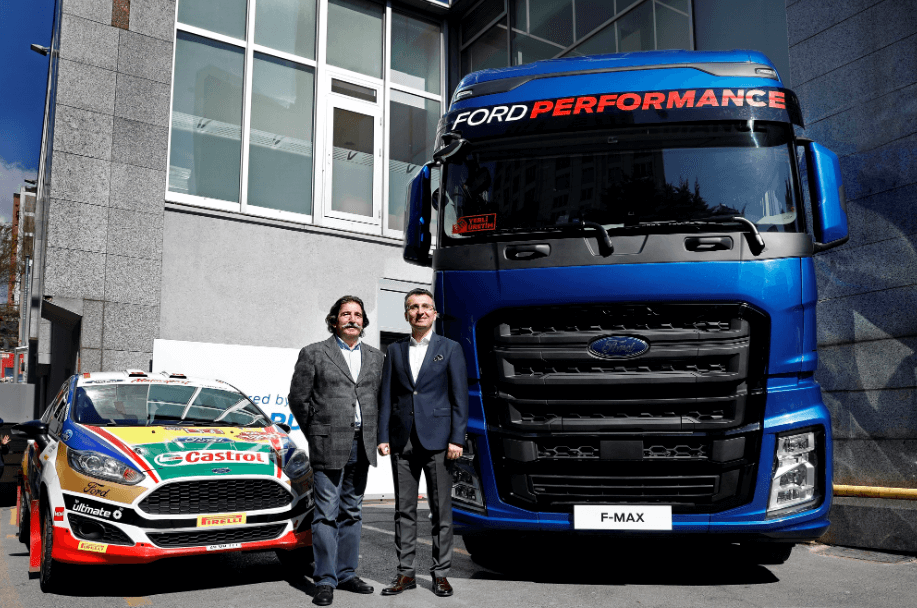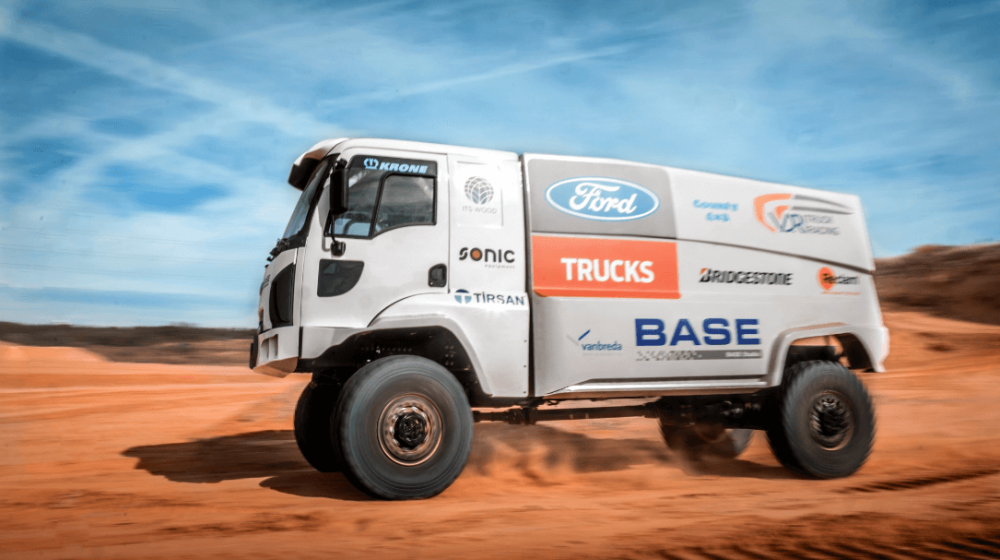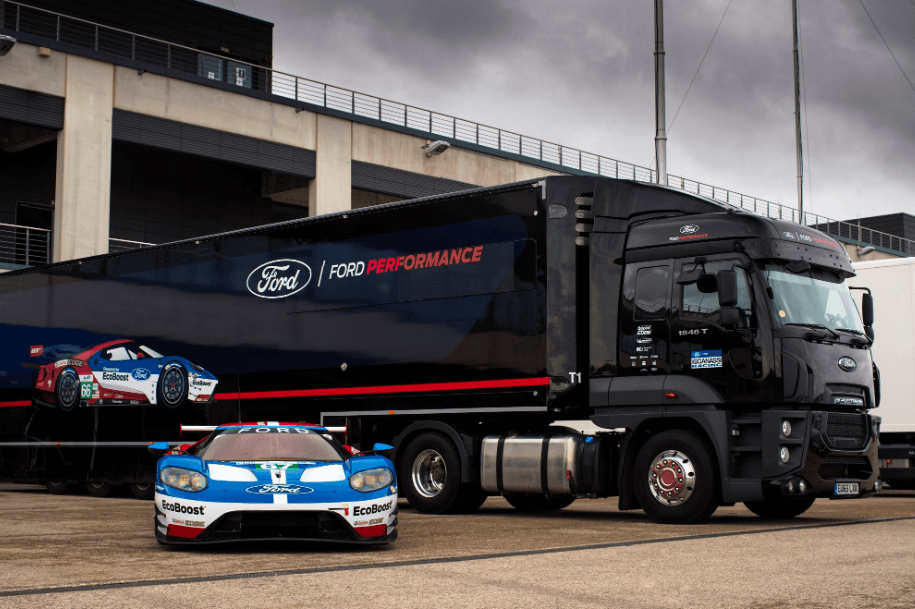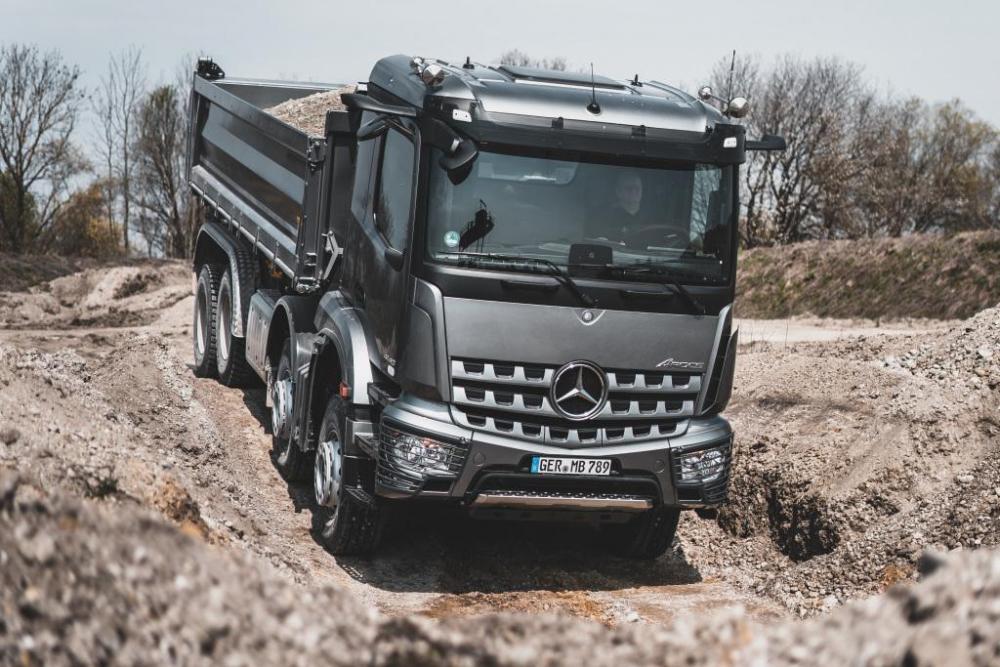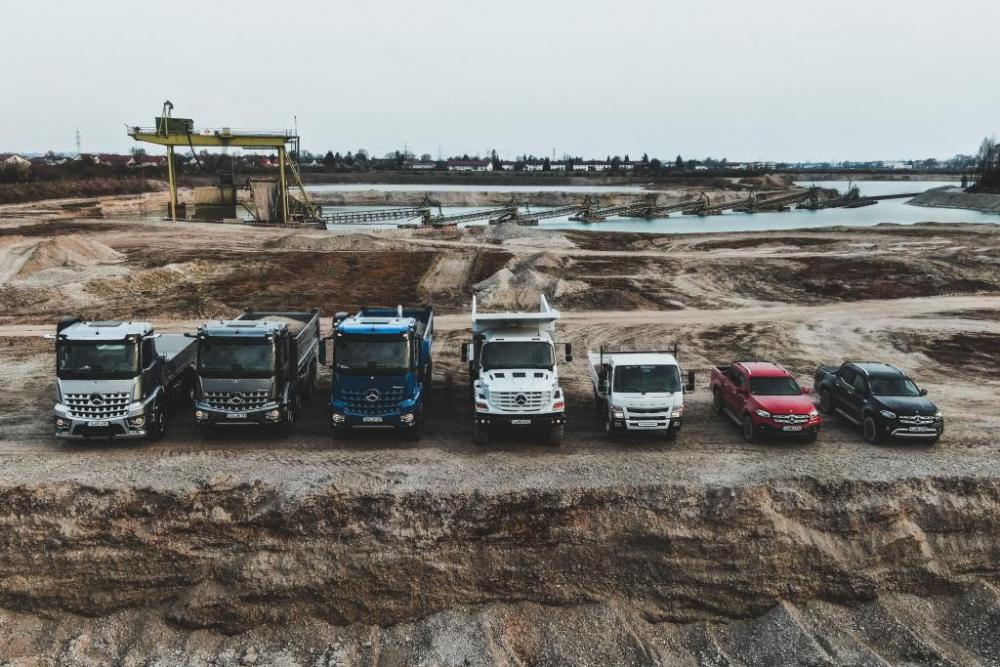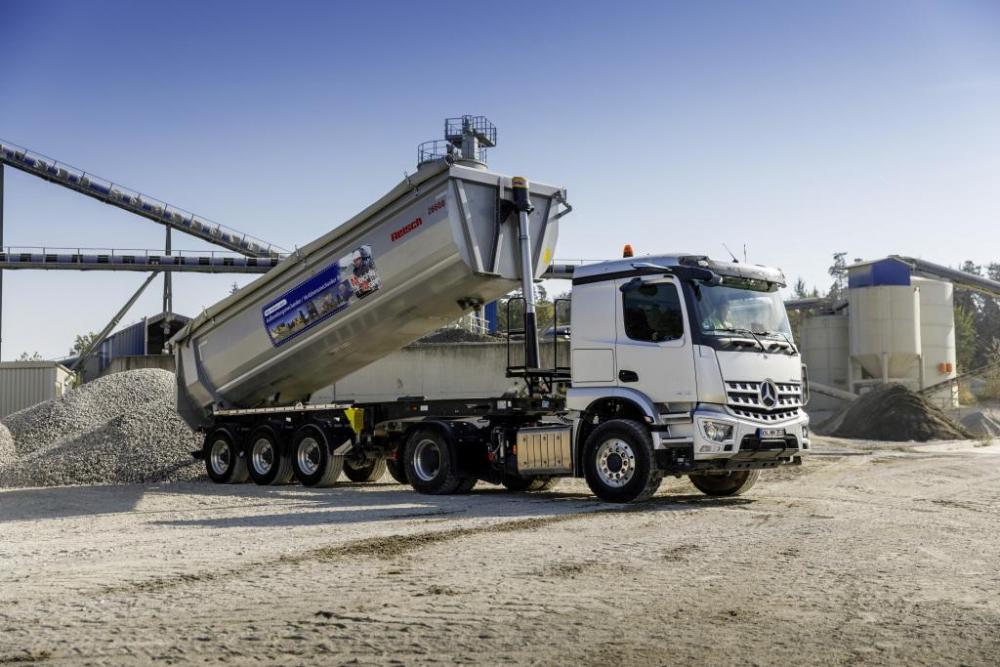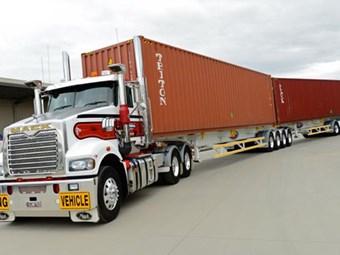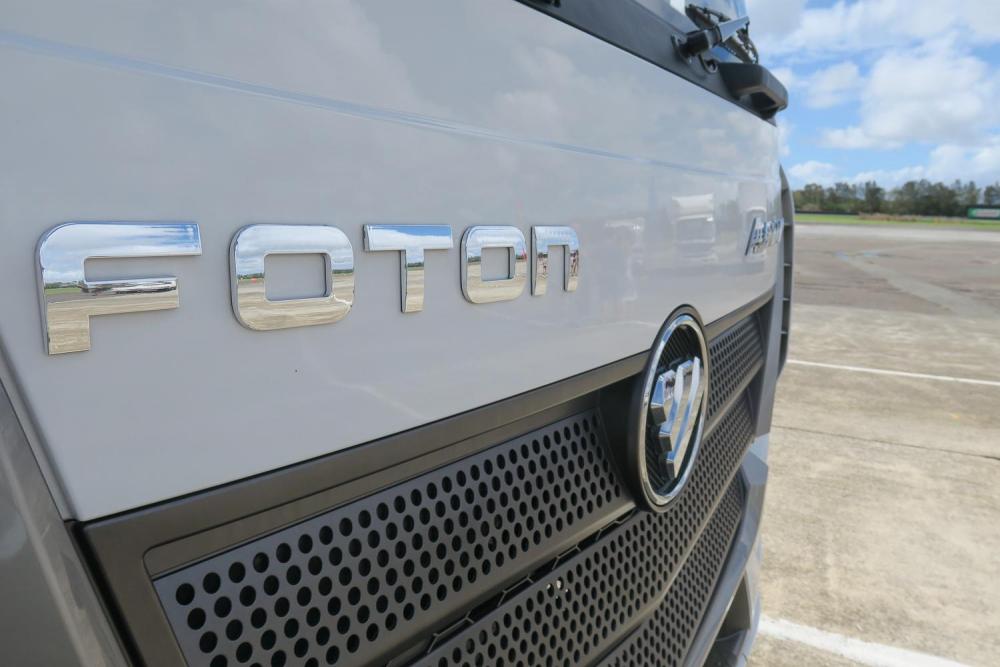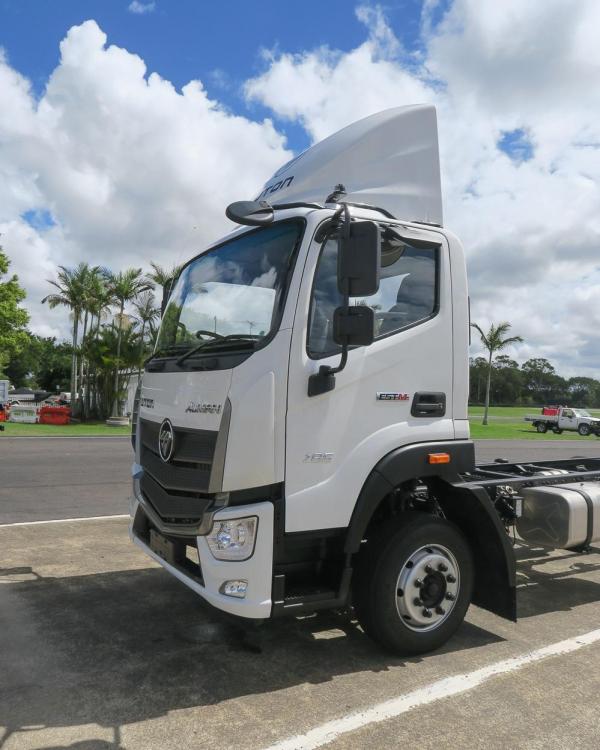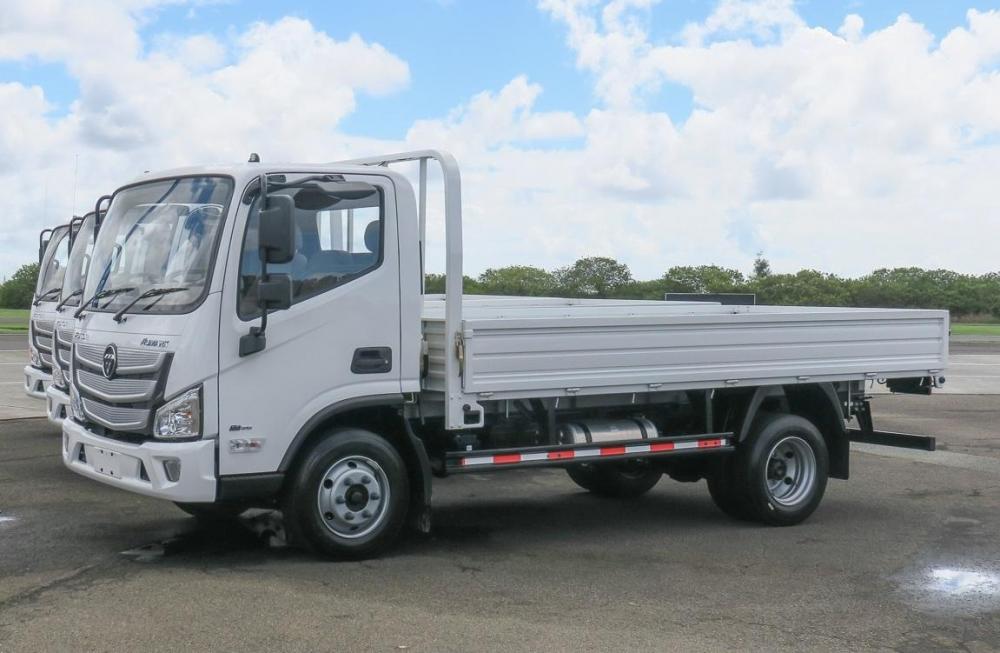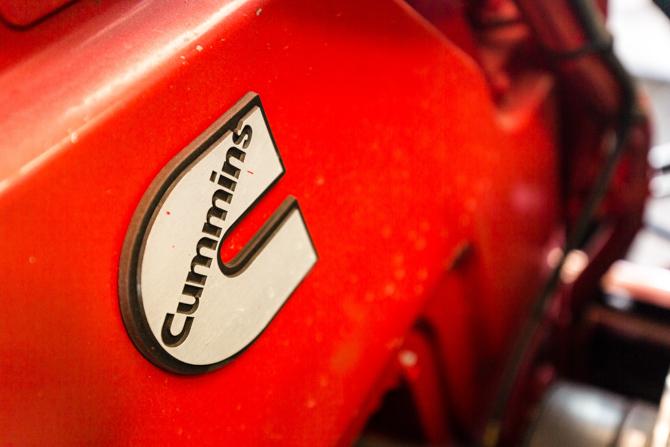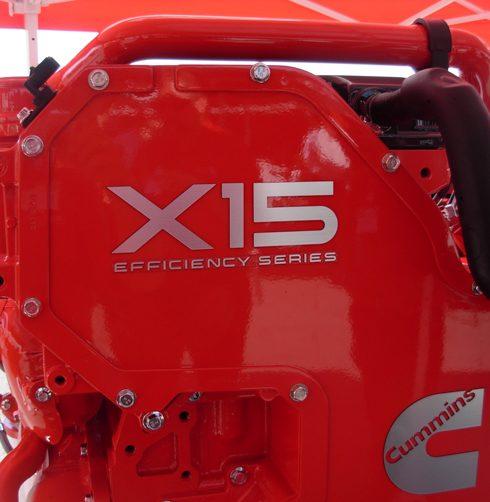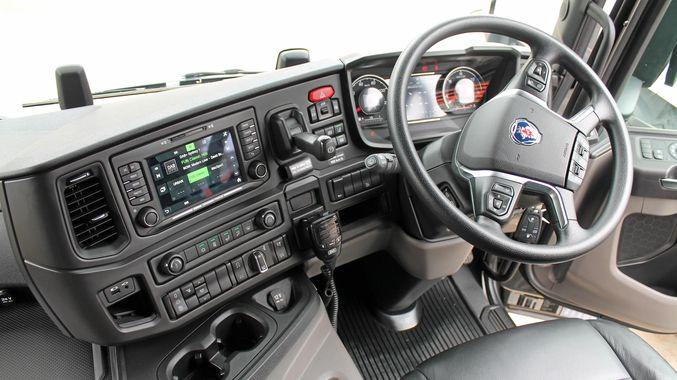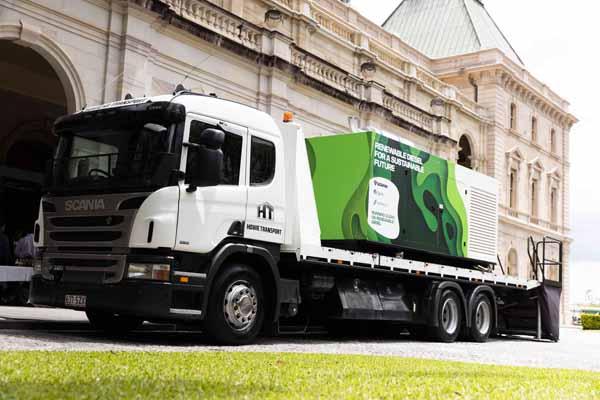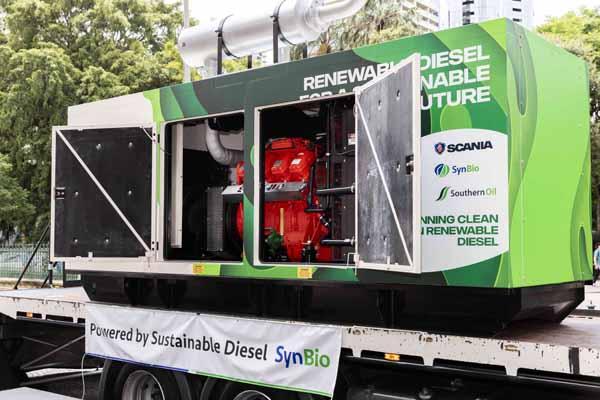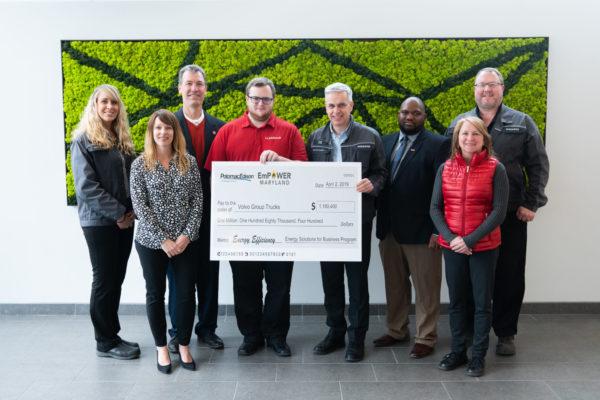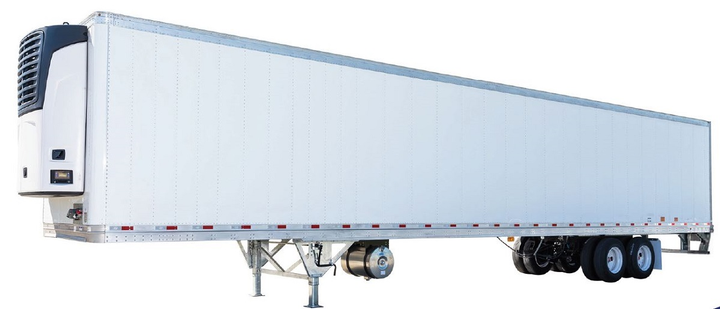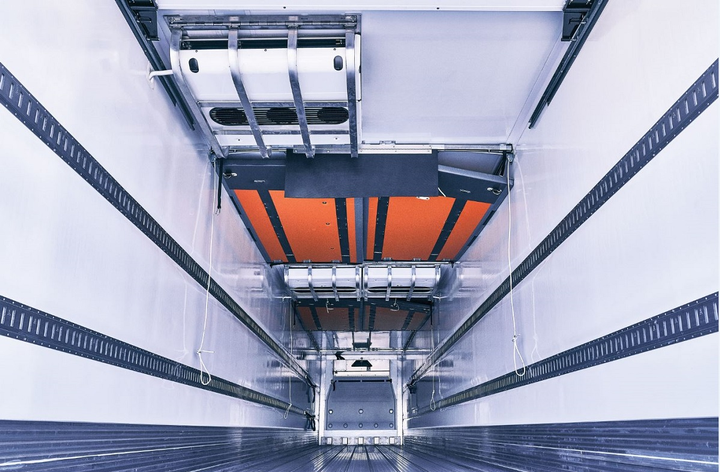
kscarbel2
Moderator-
Posts
18,855 -
Joined
-
Days Won
114
Content Type
Profiles
Forums
Gallery
Events
Blogs
BMT Wiki
Collections
Store
Everything posted by kscarbel2
-
Ford negotiating with Mahindra for India JV Reuters / April 9, 2019 NEW DELHI -- Ford Motor Co. is nearing a deal with Mahindra & Mahindra to form a new joint-venture company in India, a move that would see the U.S. automaker cease its independent operations in the country. Under the terms of the deal being negotiated, Ford would form a unit in India in which it will hold a 49 percent stake, while India's Mahindra would own 51 percent. The U.S. carmaker's India unit would transfer most of its current automotive business to the newly created entity, including its assets and employees. When asked for a comment, Ford would only say that both companies continue to work together "to develop avenues of strategic cooperation that help us achieve commercial, manufacturing and business efficiencies." Mahindra said it was "working together in identified areas" with Ford after a 2017 partnership arrangement, and "will announce further definitive agreements as we progress on some of the other areas." Currently, Ford manufactures and sells its cars in India through its wholly-owned subsidiary. In 2017, it also formed a strategic alliance with Mahindra under which, among other things, they plan to build new cars together, including SUVs and electric variants.
-
CEO Jim Hackett: Trust that Ford is 'turning the corner' Michael Martinez, Automotive News / April 9, 2019 DETROIT — Ford Motor Co. CEO Jim Hackett on Tuesday asserted that the automaker is "turning the corner" and will have positive news in the coming months. Speaking at the Detroit Economic Club, Hackett reiterated that 2019 will be a "year of execution," a phrase he's used since describing 2018 as disappointing in a year-end letter to employees. The automaker made $7 billion last year with a profit margin of 4.4 percent, down from 6.1 percent in 2017. "No one in the company was proud," Hackett said. "My reason for writing about it was not to tell them they did a bad job. It was to tell myself I can be better. I'm telling myself I can't have another year like that. Not that I'm worried about getting fired; it's like, who wants to spend their time being average?" Hackett has instituted an $11 billion global restructuring at Ford that includes a transformation of its product portfolio and cuts to its salaried work force. In North America, the automaker expects to eventually hit 10 percent profit margins. Hackett on Tuesday said the restructuring is starting to bear fruit, although he declined to go into specifics. "We're turning the corner," he said. "Just trust me on this. You're going to be reading a lot about Ford performance going forward." Hackett is approaching his two-year anniversary leading Ford. He replaced Mark Fields as CEO in May 2017 and was tasked by Executive Chairman Bill Ford with shaking up the automaker's culture and speed up decision making. But investors and analysts remain skeptical. Ford's stock price has fallen 16 percent since Hackett took over. Still, Hackett argues he has made the automaker more "fit" and better prepared it for an economic downturn. He cited the automaker's reduced time to deliver vehicles, saying when he first became CEO and ordered a Mustang it took 81 days, but that's been cut to 35 days for delivery of some Fusions. "Part of this mindset is — not to be recession-proof — but to say, 'Come on recession, we're ready for you.' " he said. "Ford will be ready for the recession." Hackett did not address Ford's ongoing salaried layoffs in North America, a process that began last November and is anticipated to wrap up at some point in the second quarter. It's unclear how many workers Ford will lay off, or how far along it is in the process. The automaker also is working on development of autonomous vehicles, which Hackett said will be ready by 2021. Tamping down expectations However, he appeared to tamp down expectations for the emerging technology. “We’ve overestimated the arrival of autonomous vehicles,” he said. “We’ll be ready, but its application’s going to be narrow, what we call ‘geofenced,’ because the problem is so complex. When we break through it, it will change the way your toothpaste is delivered.” Ford has consistently said it plans to launch a dedicated autonomous vehicle in 2021 at scale for commercial use delivering packages and other goods. It’s partnered with Domino’s Pizza to pilot autonomous delivery and with Postmates on autonomous grocery delivery. “The logistics systems that are powered today by routes and maps all folds into autonomy,” he said. “Logistics and ride structures and cities all get redesigned. I won’t be in charge of Ford when this is going on, but I see this as clearly as I saw that computer weight changing,” he said, referencing a time when he was CEO of furniture maker Steelcase that he predicted changes to computing that would affect office space.
-
Scania Trucks Press Release / April 9, 2019 Dutch crane truck specialists Gaffert recently started operating an ultra-short Scania S 520 8×2/*6. This four-axle configuration with three steered axles allows the truck to manoeuvre in tight industrial environments, as well as gain an exemption from the 72-tonne road transport weight limit. “We wanted a heavy tractor unit for normal road speeds to carry an 85 tonne-metre crane with an excellent weight distribution,” says owner Theo Gaffert. “Scania was the only manufacturer that could deliver the truck directly from factory assembly. Scania also offers has the lowest chassis in the market and that’s important to us.” Emotions figure in purchase, but profitability counts more There was a certain emotional element involved, admits Gaffert. “When we ordered the truck, we celebrated our company’s 80-year anniversary. What could be better than a V8? We also knew that it would be delivered during the Scania V8 jubilee year.” While emotions are good, Gaffert adds that operating a profitable vehicle is even better. “When I discovered that the fuel consumption for the 520 hp V8 was nearly the same as for the six-cylinder 500 hp, it was an easy decision.” Challenging configuration required inventive solutions The wheelbase is 3,950 millimetres measured from the front axle to the driven axle. Of the four axles, three are steered – two in front and one behind the drive axle. “By using a 10-tonne front axle we have a beautiful weight distribution with the crane placed very close to the cab wall”, explains Gaffert. “There are only 15 centimetres left between the cabin and crane, which we use for the hydraulic tank. Despite this short space, we added two chrome exhausts. After all, looks also matter.” With the ultra-short configuration, placing all components on the chassis was challenging. “To obtain the best result, we designed some components ourselves, such as the custom-built fuel tank and our own mudguards.” Gaffert now not only has an impressive Scania V8, but also superb lifting equipment. “The combination of a short turning radius with great lifting capacity makes this truck extremely suitable for working in industrial buildings. We are often called on to help lift new machines and hoist equipment into place.” .
-
Renault Trucks Press Release / April 4, 2019 Continuously improving the safety of city-dwellers, drivers and their loads is a constant focus for Renault Trucks. The manufacturer is therefore offering new features on its C and K ranges. Solutions that enable construction vehicles to better integrate in the city or on construction sites. The integration of trucks into the increasingly dense traffic of large urban areas and the development of soft modes of transport requires ever-increasing attention to safety aspects. Renault Trucks, which already equips its vehicles with a variety of safety systems, is offering new safety features. Simple, competitive and practical, these solutions meet customer requirements and improve the protection of vulnerable road users in urban environments. • Emergency park brake application (anti-runaway mode) reduces the risk of unexpected vehicle movement when the driver leaves the cab, by automatically activating the braking system to immobilise the truck; • The driver’s direct vision is improved by means of a passenger-side vision door that allows drivers to see any user on the road; • The driver’s indirect vision is improved by means of surveillance cameras placed around the vehicle. Images from the road are displayed on the Roadpad+ screen; • The detection of vulnerable users is enhanced by means of presence detectors located on the vehicle’s exterior, on the opposite side to the driver. The driver receives an audible and visual alert in the cab; • An external user alert speaker warns vulnerable road users when the vehicle is about to manoeuvre on the opposite side to the driver, when the vehicle is reversing and when the driver is using the vehicle’s equipment arm; • Two visual indicator repeaters complement the loudspeaker for road users with hearing loss or those wearing headphones, for example. These safety systems are in addition to those already available on the Renault Trucks range, such as the Automated Emergency Braking System (AEBS), Forward Collision Warning (FCW), Lane Departure Warning System (LKS), Adaptive Cruise Control (ACC), Electronic Stability Control (ESC) and Electronic Parking Brake (EPB), automatically engaged when the engine stops. For driving safely on construction sites, trucks in the construction range are equipped with off-road mode and manual accelerator as standard. .
-
MAN Truck & Bus Press Release / April 8, 2019 New Euro 6 engine family and launch of the new D15 truck engine series MAN TGE from 3 to 5.5 tonnes for the first time at bauma New MAN ComfortSteering and MAN LaneReturnAssist safety and driver assistance systems together with VAS Video Manoeuvring System MAN presenting six vehicles from all its model series on stand 325 in hall B4, and a further five vehicles in the outdoor area in front of hall B4 MAN will be exhibiting a large number of driveline innovations and sector-specific product upgrades at bauma, the world’s leading trade fair for construction, building materials processing and mining machinery, vehicles and equipment, being held in Munich from 8th to 14th April 2019. The 11 MAN vehicles will be presented on stand 325 in hall B4, as well as on an outdoor stand outside the same hall. See more information to fair bauma 2019 www.man.eu/bauma 11 MAN exhibits at Bauma MAN will exhibit six vehicles in hall B4, stand 325. The product highlights are: MAN TGE, new D15 engine, new engine family, improved efficiency across-the-board based on increased payload and sector-specific configurations. TGE 6.180 4x2 three-way tipper The largest tipper in the MAN TGE series, featuring a single cab and twin tyres on the rear axle. TGL 12.250 4x2 BL three-way tipper Complete vehicle supplied ex-works for construction, landscaping and horticulture companies. Tractor vehicle for transporting mini-excavators and equipment. TGS 32.400 8x4 BB truck mixer Very lightweight 8.95 tonne sector-specific chassis providing a high payload thanks to the new lighter D15 engine and hypoid axles. TGS 33.470 6x6H BL mobile crane tipper Medium-height chassis with MAN HydroDrive on the front axle providing traction as required. Launch of the new Euro 6 D26 engine, ComfortSteering and Lane Return Assist. With 59 tonnes gross train weight, the ideal vehicle for transporting construction machinery. TGX 18.510 4x2 BLS tipping semi-trailer tractor High-specification XLION special model with the spacious XLX cab. Launch of the Euro 6 D26 engine uprated by 10 hp and 100 Nm of torque. TGX 33.640 6x4 BLS heavy-duty tractor Compact three-axle heavy-duty tractor for transporting heavy construction equipment and machinery. Their permissible gross train weight is 160 tonnes – with an exemption of up to 180 tonnes. A further five vehicles exhibited on the open area in front of hall B4 will demonstrate the detailed sector-specific preparation of the MAN chassis units for their often specialist construction tasks: TGE 3.180 4x2 heavy transport support vehicle BF4 Box van featuring an on-roof dynamic traffic sign unit and a racking system in the interior. TGM 18.320 4x4 BB mobile crane tipper All-wheel drive vehicle fitted with winter clearing equipment ex works, for use all year round on construction sites and for municipal services. TGS 35.400 8x4 BB three-way tipper Maximum payload in the classic four-axle tipper segment. The new D15 engine and the lightweight hypoid tandem axle help to reduce weight. TGS 35.500 8x4 BL large mobile crane Sector-specific chassis to be equipped in future with 10 tonne front axles and a new front plate for front-end crane support. This will increase the load capacity for the crane superstructure and extend the working area of large loading cranes over the cab. TGS 50.500 10x4-6 BL concrete pump Five-axle chassis with steered trailing axle and offset units on the frame for installation of a concrete pump with mast. Ultra-lightweight truck mixer chassis MAN is extending its initiative offering concrete deliverers a truck mixer chassis with an extremely high load capacity by optimising the weight of various auxiliary units. MAN launched the lightweight hypoid tandem axle unit at bauma in 2016. They offer a weight saving of 180 kilograms compared to the previously installed 13 tonne axles. The upgrade to the new MAN D15 engine series in 2019 will reduce the chassis weight by a further approximately 230 kilograms. This means around 410 kilograms additional payload - a big gain in terms of efficient transportation. The chassis, weighing about 8.95 tonnes, meets the approval criteria for off-road vehicles of category N3G of standard height and with 315/80 R22.5 tyres, even with these hypoid axles. For the driver and the operating company it is important that MAN has achieved this weight reduction without any sacrifice in terms of equipment specification or cab comfort. The same payload optimisation measures will benefit companies operating MAN TGS three-axle or four-axle tippers. For those models, too, the new D15 engine and the option of the lightweight hypoid tandem axle will reduce weight by some 410 kilograms. MAN TGE at bauma for the first time The MAN TGE series covers the range from 3.0 to 5.5 tonnes gross train weight, adding new models at the bottom end of the MAN truck portfolio, which previously ranged from 7.5 to 44 tonnes. The MAN TGE marked its world premier in autumn 2016 at the IAA commercial vehicles show in Hanover. Since spring 2017, MAN has been introducing the van range into various European markets. The extensive product portfolio, featuring box vans, glazed combi vans and chassis units with single or crew cabs, covers a very wide range of applications in the construction industry as well as for landscaping and horticulture. The choice spans two wheelbases, three overhangs, three roof heights and three drive variants: front-wheel drive, rear-wheel drive and all-wheel drive. The 2-litre unit is available with four power ratings from 102 hp to 177 hp. New D15 engine for MAN trucks The new Euro 6 standard 9-litre D15 engine will be replacing the tried and proven D20 engine in the MAN TGS and TGX truck series in 2019,. The straight-six engine achieves higher power, lighter weight and better fuel efficiency, despite a smaller cubic capacity. The engine's light weight is a major benefit for sector-specific applications. The payload is increased by about 230 kilograms. The new engine design is a particular boon to transporters of bulk cargo, such as fuels, mineral oils and concrete. With three power ratings at 330 hp (243 kW), 360 hp (265 kW) and 400 hp (294 kW), the D15 engine is positioned in the middle range between the top-end 6-cylinder D08 engine series developing 320 hp and the bottom-end D26 developing 430 hp. The cubic capacity of the straight-six engine featuring Common Rail injection is 9037 ccm, with a stroke of 145 mm and a bore of 115 mm. Traditionally MAN derives the designation of the engine from the last of those figures. The maximum torque is 1600 Nm with power output of 330 hp, increasing by 100 Nm at each power rating. A maximum engine braking power of 350 kW is available with the Turbo EVBec. The Common Rail injection system operating at up to 2500 bar injection pressure, in conjunction with demand-based control of auxiliary units helps to reduce fuel consumption. As AdBlue fluid is readily available these days, MAN is leveraging an evolved version of the SCR technology (Selective Catalytic Reduction) combined with the self-regenerating filter system MAN CRT (Continuously Regenerating Trap) for the exhaust gas aftertreatment. The factors that contribute to the consumption efficiency are various technical solutions for the thermal management of the engine and the engine auxiliary units. These include the warm-up and constant high exhaust gas temperature, a speed-regulated coolant pump that operates as and when required or the mechanism of the 1-cylinder air compressor. Technical improvements and optimisations to the D26 and D38 engines The new engine family also includes the other MAN engine series D08, D26 and D38, which in the course of 2019 will be launched on the market as Euro 6 versions. We have introduced a completely revised version of the D26. As a result, the D26 engines will have 10 hp more power and 100 Nm more torque than the previous version. So the new power ratings will be 430 hp, 470 hp and 510 hp. The optimisations have had a positive impact on profitability by increasing the payload by around 80 kilograms and reducing fuel consumption by up to four percent. The technical improvements have now enabled the oil-change intervals in the MAN D38 engine to be increased to 140,000 kilometres – depending on usage strain. All four engine series – D08, D15, D26 and D38 – can be operated with paraffin fuels, such as hydrogenated vegetable oils, as per EN 15940, without the need for retrospective conversions. New driver assistance and safety systems for MAN trucks For many years MAN has successfully offered adaptive cruise control (ACC); now the company is adding a Stop & Go feature. When first launched back in 2018, it was offered only for two-axle on-road semi-trailer tractors. During the course of 2019 it will be available for a wide range of vehicles fitted with the TipMatic12 transmission, including particularly for the MAN TGS and TGX series used in the construction sector. Within the speed range 0 to 25 km/h, the ACC Stop & Go maintains a fixed distance from the vehicle ahead, brakes to a standstill as required, and after only a brief stoppage of a maximum of two seconds starts off again automatically. If the vehicle is stopped for longer, the driver presses the accelerator or a button on the multi-function steering wheel to move off again. This year MAN will be introducing ComfortSteering in the TGM, TGS and TGX model series featuring the new engine family. This active steering system assists the driver by adapting the steering forces to the vehicle's speed. This system also provides the technical basis for the Lane Return Assist (LRA) feature. If the driver unintentionally drifts out of the lane without indicating, the LRA activates and guides the vehicle back into the marked lane. Video Manoeuvring System for optimum near-side visibility Some of the truck exhibits on the MAN stand include the VAS Video Manoeuvring System which shows the driver the blind spot on the near-side of the vehicle, so providing early detection of critical situations when turning or manoeuvring. The system assists the driver by providing vision in addition to the rear-view mirror by means of an in-cab monitor attached to the near-side A-pillar or the dash display screen, allowing a view of the blind spot area alongside the vehicle. A wide-angle camera on the near-side of the cab captures the image. The camera monitor system can be supplemented by ultrasonic sensors on the front of the vehicle and along the near-side. These provide the driver with acoustic and visual (LED display) alerts indicating obstructions. Refurbished – all MAN trucks now with optimised interior For the 2018 model year MAN presented a new cab interior for trucks with Euro 6 engines. In the course of 2019, all TGL, TGM, TGS and TGX series models conforming to emissions standards below Euro 6 will also be fitted with the new interior. Design, functionality and ergonomics are the focus areas. Two modern interior colour schemes are available: “Sand” beige and “Urban Concrete” dark grey. The latter is more resilient to staining by dirty hands or oily workwear. The main instrument panel features a clearly laid-out 4” high-definition colour screen. The displays on it are in different colours to aid readability and orientation. The central switch and control panel also has restructured functionality. Switches are grouped by function for more intuitive operation, and functions that are used frequently, such as the rotary switch for the MAN TipMatic automated transmission, are now positioned on the main control panel. The instrument panel above and to the right of the central control panel offers more storage space with integral electrical sockets and new flexible cupholders. The repositioning of the TipMatic rotary switch also creates more space between the seats and in front of the bunk. The coolbox/storage box also contributes to this extra space, because in the long cab variant it is stowed away under the bunk. The coolbox is also larger than previously, and now has a capacity of 35 litres, with a quick cooling function and a quiet rest mode. Alternatively, a large lockable storage compartment can be provided in this location. In the optimised rest area, the lower and (optional) upper bunks are provided with more convenient electrical controls, with switches for the internal lighting, the window lifters and the sliding roof. Four high-performance sockets (12V, 24V, USB) and a new lighting design enhance user comfort. MAN Individual replaces Truck Modification In spring 2019, MAN Truck & Bus is consolidating its modification operations on trucks, buses and vans under the name MAN Individual. MAN Individual’s wide-ranging and industry-specific truck modification offering comprises work to both the exterior and interior of the cab, to the chassis and to the driveline. As an optical indication of the services commissioned, the offering also comes with an MAN Individual badge, which is attached to the instrument panel in the cab. However, this is only the case if the services largely involve making visible refinements to the vehicle. .
-
IVECO Trucks Press Release / April 8, 2019 IVECO joins CASE Construction Equipment at the Bauma 2019 exhibition to showcase its offering of vehicles for the quarrying, recycling, urban construction and road-building sectors on stand FN817. IVECO presents the latest generation Daily 4x4, which introduces the first 7-tonne GVW 4x4 vehicle with payload up to 4,300 kg in the market and an extended offering with a full line-up of off- and all-road light commercial vehicles. IVECO is present at the Bauma 2019 exhibition, which is taking place in Munich from the 8th to the 14th of April 2019, with a display focused on the construction sector on a joint stand with CASE Construction Equipment. The vehicles on show are representative of the brand’s wide offering for every mission – quarrying, recycling, urban construction and road-building – ranging from the heavy-duty off-road IVECO Astra HHD9 to the Stralis X-Way range, specially developed for construction logistics, as well as the new generation Daily 4x4. The application-based layout of the stand with the quarrying, recycling, urban construction and road-building sectors each having a dedicated area, highlights how IVECO’s vehicles for the industry complement the CASE equipment to provide a complete solution to meet the specific requirements of customers. For the recycling sector, the natural gas powered Stralis NP 6x2 crane-tipper truck provides the perfect solution, combining the advantages of extremely clean and quiet operation with the payload and performance benefits of its diesel equivalent. The noise level as low as 71 dB (Piek Quiet Truck test) is a definite asset when operating in recycling facilities. All this, together with the outstanding manoeuvrability, compact overall dimensions, towing capacity (44 tonnes GVW) and big payload of the truck makes it ideal for recycling operations. The Stralis X-WAY rigid three-way tipper truck on display in the road building area of the stand is representative of IVECO’s range specifically developed for construction logistics to provide the perfect crossing for on-road applications requiring off-road mobility. It combines IVECO’s best fuel-efficiency and safety technologies with the renowned off-road robustness of its toughest vehicles to deliver high productivity with best-in-class payload and outstanding Total Cost of Ownership. It can be relied on to deal with the driving conditions on a construction site while carrying the biggest payload in the sector, then go on to perform with excellent fuel-efficiency, safety and comfort on the road. It is available with a switchable hydraulic front-wheel drive, which presents particular advantages for a truck required to drive on- and off-road: fewer moving parts resulting in less wear and reduced consumption, lower weight and quieter running on the road. The urban construction area features the top-of-the-range model of the new IVECO Daily 4x4: the first 7-tonne Gross Vehicle Weight 4x4 vehicle with payload up to 4,300 kg in the market with a choice of body lengths up to 5 m. It is part of IVECO’s latest generation ‘go anywhere’ vehicle range, which builds on this family’s heritage of unlimited versatility, extreme robustness and high driving comfort, and extends the offering with new all-wheel drive configurations, manual or the class-exclusive 8-speed Hi-Matic gearbox, and new van versions. The extensive line-up includes cab, chassis cowl and crew cab models in 3.5, 5.5 and 7.0 tonnes and van models in 5.5 and 7.0 tonnes GVW versions with a choice of single wheels off-road and twin wheels all-road configurations. The van models offer cargo volumes ranging from 9 to 18 m3 for the single wheel off-road and from 16 to 18 m3 for the twin wheel all-road showing the extreme versatility of the range. Powered by the F1C Euro VI 3.0-litre engine generating 180 hp and 430 Nm torque the Daily 4x4 can accomplish every mission on all terrains with ease. Drivers also benefit from features such as disk brakes with ABS and Electronic Stability Programme (ESP) specifically developed for the 4x4 vehicle to guarantee top braking performance and durability. The quarrying display features the 65-tonne GVW new IVECO Astra HHD98x6 Euro VI in dumper configuration with a 24 m3 reinforced body, a full automatic transmission and special CE equipment allowing for the CE Certification according to the Machinery Directive. It is part of the Astra range of vehicles designed for heavy off-road applications in oil & gas, mining, quarrying, heavy construction and heavy haulage. It is among the most cost-efficient solutions for daily heavy-duty use under extreme conditions, when productivity and reliability are a priority. It combines the robustness, payload and reliability advantages of the rigid or articulated heavy-duty bodies typical of the industry with significantly lower Total Cost of Ownership. With the possibility to provide the CE Certification, this machine complies with the most stringent regulations in terms of safety in quarries and construction sites. Also on the stand is a Daily Hi-Matic in the set up and livery of a CASE Service van equipped as a mobile workshop by bodybuilder SORTIMO. The vehicle features IVECO’s class-exclusive 8-speed automatic transmission and is powered by the F1C 3.0-litre engine, which delivers 180hp and 430 Nm torque. The rear air suspension reduces vibration, ensuring a smooth ride for the tools and equipment in the mobile workshop. .
-
Ford Blog / April 2019 We are moving our contributions to motorsports organizations to a level beyond Ford Trucks! In the coming period with Ford Trucks, we will support motorsports, races and other performance sports with our initiative called "Powered by Ford Trucks". Aiming to increase our awareness on the tracks with the experience of truck production and performance for nearly 60 years, Ford Trucks Deputy General Manager Serhan Turfan, with the participation of Castrol Ford Team Turkey Team Director Serdar Bostancı, March 28 In a press conference Thursday, Ford Trucks is supporting the most prestigious motorsport organizations worldwide "to reflect the performance of our DNA on the tracks". Serhan Turfan, "as Ford Trucks, we are investing in the engineering of motorsport on the one hand in the country and abroad. As an international brand that continues to grow in Central and Eastern Europe following the Middle East, Africa, Russia and the Turkic Republic, motorsport organisations support our corporate vision. From This point of view, we find it important to be in Ford Trucks on all platforms with Ford's power and performance approach. Our sponsorship and support for Ford Motosport Turkey, the BARREL World Endurance Championships (WEC), and the World Rally Championship (WRC) are the most important part of our strategy. Motorsport is an area where we can integrate our brand awareness especially in overseas markets with the new F-MAX's power and performance image. We contribute and invest in Motorsports, including WEC, WRC, Dakar and ETRC, in four of the world's most important racing events. We made our first partnership in This field with the Ford Chip Ganassi Racing Racing Team at the World Endurance Championships in the BARREL and continue our support for three years. We also deliver our new International Truck of the Year award-winning F-MAX vehicles to the Ford Chip Ganassi Racing Team in April. We moved our support to VDR Truck Racing further with a new collaboration at the end of 2018. As part of This collaboration, our engineers developed our Ford Trucks trucks for the first time in the Dakar Rally, one of the world's toughest ralships. Ford Trucks ' own vehicle production experience and engineering capability in motorsports with the first time we carried the Dakar 2019. The tools developed by Our Engineers participated in Dakar 2019. This first race, which we attended in Dakar with Great excitement, was actually a learning process for us, "he quoted the words. "We provide logistics with the new F-MAX in the World Rally Championship (WRC)" Turfan, who is one of the World's most important rally teams in the World Rally Championship (WRC) for the International Truck of the Year, awarded the logistics of the two Ford Trucks F-MAX-winning trucks, "Last year, World Rally Championship-WRC Marmaris We also took place as Ford Trucks on foot and delivered our vehicles to the M-Sports team there with a ceremony. This year we will meet thousands of competitors in a category that is different from all these sponsorships. For the first time in Ford Trucks, we will be among the sponsors of the European Truck Racing Championship (ETRC), one of the most prestigious heavy commercial organizations in the world. After the Itoy award won by our New Hammer, we received 70 dealership requests from Europe. On top of That, we have highlighted our plans for the Western European market and started negotiations for dealership for 7 new countries. "We will begin the first time on the runway for the Western European market, where our new hammer, F-MAX, who has been awarded the International Truck of the Year (IToY), is in heavy demand," said 2019. .
-
Daimler Press Release / April 9, 2019 At this year's Bauma exhibition in Munich, international and German specialised journalists were given a first-hand experience of the exhibited Mercedes-Benz construction vehicles in operation on off-road terrain. A true world premiere: the new Mercedes-Benz Arocs showed its indestructibility in mud and scree for the first time. A total of six Mercedes-Benz commercial vehicles were available for test drives at the Ebenhöh gravel plant. From small to large, from the Mercedes-Benz X-Class to the heavy-duty all-wheel drive tipper – the Arocs 4153 AK 8x8/4 – with a turbo retarder clutch and 80 tonne drivetrain. And in between those, other Arocs with various-sized engines such as the 4143 k 8x4/4 and the Arocs 1853 k 4x2 were also available. A Canter 4x4 and a Zetros 4043 A 6x6 for export completed the vehicle pool. The terrain made for driving through mud and, in complete contrast, through sand in order to demonstrate the robustness of the vehicles in practical everyday situations. The "hairpin bend", "hairpin bend with steps" and the "ruts" station validated the precise handling of the vehicles. .
-
Daimler Press Release / April 9, 2019 Bauma 2019 in Munich: the new Mercedes-Benz Arocs is the Mercedes-Benz Trucks new flagship for construction traffic Construction traffic is also entering the digital age: among other features, MirrorCam, Multimedia Cockpit and Active Brake Assist 5 are new in the Arocs Final tests before the start of series production: positive feedback from customer Meichle + Mohr's fleet manager and driver Roland Maier, Fleet Manager at Meichle + Mohr: "Even a highly skilled driver with excellent knowledge of the route doesn't achieve fuel consumption rates in interurban traffic like those of the new Arocs with improved Predictive Powertrain Control." Munich - The Bauma 2019 exhibition is aiming for a new record: more than 3,500 exhibitors from fifty-five countries and over 600,000 visitors are expected between 8 and 14 April in Munich. In addition to vehicles, the world's most important construction industry trade show presents many digital offerings to exhibitors and audiences this year. The new Arocs, presented at the Mercedes-Benz Trucks exhibition stand, reflects this trend with its innovations. What's tried and tested in the Arocs – its wide range of cabs, engines and all-wheel-drive systems – is now complemented by innovations which sustainably improve safety, connectivity and efficiency. With MirrorCam, Multimedia Cockpit and Active Brake Assist 5 as well as an enhanced version of Predictive Powertrain Control and a newly revised Sideguard Assist, the Arocs sets new standards in heavy construction traffic. Field-testing the new Arocs as a tipper semitrailer at Meichle + Mohr In order to ensure the reliability and robustness of the new systems, the Arocs has undergone a final series of field tests involving several customers immediately before the trade show. One of these tests took place at Radolfzell-based Meichle + Mohr. From eighteen locations in the Lake Constance region, the company supplies its customers with macadam, gravel, concrete and precast concrete elements. Almost always its vehicles drive fully loaded through challenging topography, with many short overland route sections. Therefore, Meichle + Mohr have been intensely focusing on the performance of both the MirrorCam and the improved Predictive Powertrain Control, the latter of which is now also usable in interurban traffic. Predictive Powertrain Control now also in interurban traffic – drive more comfortably and save fuel Construction vehicles are often used on rural roads. Here, the new Predictive Powertrain Control causes a noticeable drop in fuel consumption. In addition to a satellite-based positioning system, the system uses digital road maps that contain data on topography, road bends, the geometry of intersections and roundabouts as well as traffic signs. This ensures that even in interurban traffic, the new Arocs may always drive in the right gear and at the appropriate speed in order to be as fuel-efficient as possible. Meichle + Mohr driver Felix Amman has been driving the new Arocs in tipper semi-trailer configuration for several weeks on rural roads all around Lake Constance. His verdict: "Thanks to Predictive Powertrain Control, I can now also drive comfortably overland using cruise control. The system always chooses the right speed for cornering, intersections and roundabouts. And I can just roll toward speed limits and village entrance signs. By the time I pass the sign, I'm driving at exactly the right speed." Roland Maier, fleet manager at Meichle + Mohr, emphasises the economic benefits of the intelligent cruise and transmission control: "Even a highly skilled driver with excellent knowledge of the route doesn't achieve fuel consumption rates in interurban traffic like those of the new Arocs with improved Predictive Powertrain Control." New MirrorCam: easier manoeuvring and more information help the driver both on the road an on tight-spaced construction sites The new MirrorCam replaces the conventional main and wide-angle mirrors in the new Arocs. Its streamlined construction also contributes to the reduced fuel consumption of the Arocs. In terms of safety and handling, the system also offers great benefits. It makes work easier both on the road and in the confined space of building sites for drivers in construction supplier traffic where there are numerous unloading points. The images from the compact cameras mounted on the side of the roof frame are transmitted to two displays at the A-pillars inside the truck. The absence of the large mirrors considerably improves all-around visibility. The driver also has a good view past the A-pillars diagonally to the front. Using conventional mirror configurations, it is possible for the driver to be on the road with badly adjusted mirrors, causing a so-called "blind area" in which pedestrians and cyclists are not visible. The MirrorCam solves the problem of badly adjusted mirrors entirely: before every engine start, the camera automatically sets itself up for optimal vision. And from any perspective, the display shows a complete image. Meichle + Mohr driver Felix Amann's comment on MirrorCam: "The displays on the A-pillars are placed in one's field of view in a way that allows you to better perceive what is going on around the vehicle. In addition, there is a range of auxiliary functions. For example, the camera toward the inside of the bend swivels during cornering, which gives me an optimal view of the tipper trailer. You just travel more safely with MirrorCam!" Also available: revised Sideguard Assist, new Active Brake Assist 5 and Multimedia Cockpit The MirrorCam and the even further improved Sideguard Assist work hand in hand in the new Arocs. By warning the driver with optical and acoustic signals, the Sideguard Assist reduces the risk of dangerous accidents on the passenger side when turning to the right. With this system, Daimler Trucks is currently the only manufacturer to offer such a safety assistance system that is fully integrated into the vehicle architecture. This enables the Sideguard Assist to issue warning messages that take the entire vehicle length into account, and to predict the curve trajectory of the trailer. If the Sideguard Assist is installed, the MirrorCam display shows the warning messages of that system. All relevant hints and indicators are in one place – this avoids the driver being overwhelmed with information. Furthermore, the Sideguard Assist is also able to assist the driver while turning to the left even for trucks with a more than 1.5-metre frame overhang. With this kind of truck, there is the danger that the right-hand rear corner of the trailer may swerve while turning left, causing the danger of a collision between another road user and the truck's frame overhang. In the new Arocs however, the Sideguard Assist warns the driver of a possible collision of that kind sufficiently in advance. The emergency brake assistant has also been improved in the new Arocs: Within system limits, the new Active Brake Assist 5 is able to slow down the truck to a standstill if there is the danger of a rear-end collision. This system is now even more powerful than its predecessor and no longer utilises only radar, but a combination of radar and camera system. Among other things, the system's response to persons in a speed range below 50 km/h has been improved. An important safety gain in inner city traffic. The new Multimedia Cockpit is intuitively operable. Its high-resolution primary colour display replaces the traditional instrument cluster with its speedometer, rev counter and fuel gauge. It gives a clear overview of all relevant driving and operating conditions. In addition to the primary display, a touchscreen replaces the usual switch field. The touchscreen allows the driver to comfortably utilise a wide range of functions, for example operating dump truck or concrete mixer bodies. Furthermore, they can obtain information about vehicle conditions such as tyre pressure at any time. Further images and a video clip can be found under roadstars.com/magazine The following pictures and further press material about Daimler at the Bauma exhibition 2019 are available online: d.ai/bauma2019 .
-
Janes 360 / April 8, 2019 The United States handed over 37 Navistar Defense International MaxxPro mine-resistant, ambush-protected (MRAP) vehicles to Albania on 3 April, the US embassy announced. The donation is part of the US government's 248-vehicle aid package for the Albanian Armed Forces (AAF).
-
International Trucks Press Release / April 3, 2019 .
-
Ford thought the global EcoSport was too spartan and decided to revamp the interior before introducing it in North America. I drove it overseas and thought it was fine......never could understand their decision. Also, Ford originally thought the EcoSport (alike the Ranger) had no place in North America.
-
Volkswagen launches all-new Delivery light truck range
kscarbel2 replied to kscarbel2's topic in Trucking News
I have suggested it to Navistar management. Alike Chevrolet Commercial, NAV would offer both the CV conventional and the Delivery low-cab-forward. -
FORD: Trucks can't overcome car slump Richard Truett, Automotive News / April 2, 2019 Ford's March U.S. sales dropped 5.2 percent with sharply weaker car demand offset by slightly higher truck deliveries, according to the Automotive News Data Center. Lincoln logged another quiet month with sales ticking up 1.9 percent. If there were two breakout stars on the showroom floor, it was the Ranger midsize pickup and the EcoSport crossover. And a hat tip to the Fiesta for a strong month, even though the end of the road is near. Lincoln's new Nautilus is off to a good start, but otherwise, not much is happening in Ford's luxury division. Brands: Ford, down 5.5%; Lincoln, up 1.9%. Notable nameplates: EcoSport, Ford's smallest crossover, continues its winning streak with sales of 5,244 units. For the quarter, Ford sold 12,879 EcoSports, up 111 percent over 2018's first quarter. The Fiesta, running on fumes as the clock winds down on the entry-level hatchback, racked up March sales of 7,299, up 47 percent year over year and 29 percent for the quarter. Another Ford car slated for burial, the midsize Fusion sedan, also saw sales rise in March, with 18,008 sold, up from 16,103 a year ago. On the truck side, the F-150 held its ground against the recently revamped Ram from Fiat Chrysler and the Chevrolet Silverado and GMC Sierra from General Motors. U.S. sales of the F-150, the industry's best-selling nameplate, totaled 86,497 last month, down from 87,011 a year ago. For the quarter, sales were stagnant, but still an industry best at 214,611, down 0.2 percent over a year ago. The Ranger's return has been nothing but good news for Ford. The midsize truck chalked up sales of 4,369 units in March, according to the Automotive News Data Center. But two of Ford's bread-and-butter SUVs, the Escape and Edge, posted March declines. At Lincoln, March can best be described as sleepy. Sales of the brand's utilities rose 10 percent, a gain canceled out by a 19 percent decline in car deliveries. The Nautilus SUV was Lincoln's star performer in March, with sales of 3,019. Ford and Lincoln sales figures for March are provided by the Automotive News Data Center. Q1 2019 U.S. light-vehicle market share: 14.7% vs. 14.5% in Q1 2018. March incentives: $3,954 per vehicle, down 5.1%from a year earlier, ALG says. Average transaction price in March: $39,183, up 4.8% from a year earlier, according to ALG Did you know? Though Mustang sales were down in March, that could change starting now. Traditionally, sales of sporty cars pick up in the spring, jump-started oftentimes by added incentives. Mustang's strongest months are usually April to August. Sales of sporty cars have been weak as the market shifts from cars to crossovers, trucks and SUVs. We'll be watching closely to see if Mustang gains ground as we round the corner into summer.
-
Ford Trucks Brasil: a breath of hope? Transport Brasil / April 2, 2019 Grupo Caoa announces purchase of Ford operations in São Bernardo do Campo and wants to continue manufacturing trucks under US brand license The legendary Ford Trucks is heading for a happy ending: after leaving the market stunned by its withdrawal in South America and threatening to eliminate more than 3,000 jobs, the company is, according to the newspaper O Estado de São Paulo, closing a sales agreement for Grupo Caoa, which already distributes the Subaru, Hyundai and Chery brands in Brazil. According to newspaper sources, Caoa is interested in manufacturing Ford's trucks under the brand's license. Production of the Ford Fiesta hatch would continue. In Goiás, in the industrial city of Anápolis, Caoa has a large industrial complex where it manufactures the Hyundai HR and HD80 trucks, as well as the Hyundai Tucson and iX35 SUVs. There, the new Chery Tiggo 5X and Tiggo 7 are also made. Help from the São Paulo government When Ford announced the closure of its truck plant, the São Paulo government, led by Governor João Dória, began work to find a buyer for the operation, thinking about preserving jobs. With the help of the governor and with interest in the Ford factory, Caoa Group expressed an interest in the São Paulo operation. The company said in February it had a strong partnership with Ford four decades ago and that "it would be natural for Caoa and Ford to talk about future deals." Nothing official yet Caoa and Ford have not yet confirmed the news and a Ford spokesman refused to discuss the matter. However, the news check with industry sources confirms the fact. Plans with VW In addition to having a new commercial truck joint venture in Brazil with Caoa, Ford’s plans also include a partnership with Volkswagen. The idea is to develop medium-size pickups and commercial vans together from 2022. The first fruit of this partnership will be the new Ranger, which will include a Volkswagen version. In addition, Ford and Volkswagen have already stated that they will work together on the development of electric vehicles, as well as investing in the development of autonomous vehicle systems. Scenes from the next chapters It remains to be seen how the customers of Ford Trucks and their thousands of vehicles in circulation throughout Brazil will remain. How will the dealer network be structured? And the jobs?
-
Volkswagen launches all-new Delivery light truck range
kscarbel2 replied to kscarbel2's topic in Trucking News
The Delivery light truck range from Volkswagen Truck & Bus. Tailor-made for your business. Click and learn more: https://www.novodelivery.com.br/ . -
Australasian Transport News (ATN) / April 2, 2019 Combinations up to 30m included in pre-advised design approval process The National Heavy Vehicle Regulator (NHVR) has expanded the performance-based standards (PBS) pre-advised design approvals in its latest update. From April 1, 2019, the PBS pre-advised design approval process includes qualifying B-double combinations up to 30m. The scope of pre-advised specifications for truck and 3- or 4-axle dog and prime mover and semi-trailer combinations has also been broadened to include Level 2. NHVR chief engineer Les Bruzsa says the pre-advised process is improving processing times. "Since the commencement of the pre-advised design approval trial in March 2017, application processing times for applicable vehicle types have reduced on average from four weeks to three business days," Bruzsa says. "To date, most major combination designs have been pre-advised and it is estimated that 90 per cent of all PBS design applications will qualify for approval under the simplified pre-advised design approval process." More on the update can be found here. .
-
The New Kenworth T410 and T360 on the Move Diesel News Australia / April 2019 Here is a short video giving us a bit more of a look at the new Kenworth T410 and the T360 on the move, taken at the recent showcase of the new trucks at Anglesea in Victoria. The introduction of these two new models means the Kenworth brand has a modern state-of-the-art truck throughout its main range, apart from in cabover. Of course, it will continue with these outliers in terms of cabovers, the very top of the range and road train prime movers, models like the K200, T659, T909, T509 have a specific market and are not set to change anytime soon. Of course, the K200 and the T909 are popular sellers, but Brad says there are concrete plans to launch any replacement any time soon. However, modernisation must be on the drawing board for these two, at least. As usual the Paccar organisation will play its cards very close to its chest and the K200 and T909 are too important to be tinkered with lightly. However, for now a truck buyer looking for anything from a heavy duty rigid with a nine litre engine all the way up to a road train prime mover with a 15 litre engine has the option of going the next step with a modern conventional Kenworth truck. Video - https://vimeo.com/328278126
-
Diesel News Australia / April 2019 The Australian truck market is witnessing the return of Foton, as the Chinese truck maker introduces a new range of trucks into the light and medium duty truck market. Two models are slated for release in the coming months. There have been a couple of previous appearances for the Foton here in Australia, but this time the Chinese parent company is involved, bringing its own people to Australia to get the brand kick started. There are two truck models coming into the country, the Aumark and the Auman. The Aumark is the more familiar light duty offering and the Auman is the name used for the truck maker’s higher GCM models right up to heavy duty prime mover size. The new models coming onto the market in 2019 are the Aumark S and the larger Auman EST In China, Foton is involved in a close relationship with Daimler Trucks and this relationship can be seen in the design of the front grille on these new trucks. It is very reminiscent of the Mercedes Benz grille on the new range of trucks introduced here back in 2016. There is also a joint venture with Cummins which provides the 3.8 litre engine in the Aumark S, which comes on stream in the next month or so, here in Australia. Power is 150hp. It will be available as both a 4.5 tonne GVM and a heavier 7.5 tonne version. This model is a considerable upgrade on the Foton models we have seen on the Australian market before. The new electronic architecture, which comes along with the new modern Benz-like look, brings with is electronic stability control, ABS, hill start assist and lane departure warning. These are all features which are becoming the standard in the more modern Japanese trucks in this market. The gearbox comes from another of Foton’s joint venture partners, ZF. The German transmission specialist’s six speed manual gearbox is offered in the Aumark S. With disc brakes all round, the Aumark uses a full air braking control system. This is consistent with all of the other Chinese truck manufacturers who have dipped a toe into the Australian trucking waters. Later in the year we will see the appearance of the Foton Auman EST, a much more ambitious move into the Australian truck market. This is a 12 tonne GVM model and a first for a Chinese manufacturer here in Australia, a move into the medium duty market. This is currently slated to make its first appearance on the market in June. Power on this model comes from a 4.5 litre Cummins ISF with 185hp on tap. This drives through another, but heavier, six speed transmission from ZF. The new trucks’ first appearance in Queensland saw the Foton team put a number of examples of different body options on display to suit the Aumark S, but only a cab chassis configuration on the larger Auman. Body options will come along later. The new body shape and grille does make these trucks look much more modern than their clunky predecessors. The new CANbus electronic architecture does enable the manufacturer to plug into all of the latest technology. The question will be, and it always is with the launch of a Chinese brand, just how well does the truck suit our market and does the truck maker understand the Aussie truck buyer enough to reach the kind of modest sales targets the company is setting for itself. .
-
Diesel News Australia / April 2019 Celebrating its 100th year as a company in 2019, Cummins is to showcase its past and its future as it showcases a range of legacy and future engines at the Brisbane Truck Show. “This will be one of the most impressive collections of Cummins engines ever displayed in Australia, ranging from a 3 hp, single-cylinder 1922 unit to our 600 hp X15 coupled to the all-new 12-speed Endurant automated transmission,” says Mike Fowler, Cummins South Pacific’s Director of Engine Business. A Glimpse into the Future The two X15 engines and one X12 at the Brisbane Show will be Euro 6 versions which are expected to become available in Australia and New Zealand in 2020. Both the 12-litre and 15-litre Cummins platforms are EGR-free for Euro 6, using SCR/AdBlue technology along with a diesel particulate filter (DPF) for compliance. The X12, rated at 500 hp and 1700 lb ft of torque, achieves the highest power to weight ratio of any engine in the 10-to-16-litre class and will soon become available in a truck chassis in Australia. Two versions of the X15 Euro 6 engine will be on display at Brisbane – the Efficiency Series and Performance Series – and each has a different set of hardware and software to achieve its objectives. “They are two separate platforms that will allow customers to optimise their engine to best meet their needs without compromise,” says Mike. The X12 and Efficiency version of the X15 will be coupled to the all-new Endurant 12-speed automated transmission, the first heavy-duty automated transmission to emerge from the joint venture Eaton Cummins Automated Transmission Technologies business. “This is a game-changing transmission featuring a sophisticated communication system between the engine and transmission software,” says Mike. A key element of the ‘Cummins Integrated Power’ solution, Endurant is engineered to support engine downspeeding to help save fuel. It features predictive shifting using look-ahead technology to execute shift decisions at the best rpm for fuel economy while maintaining good on-road performance. The X15 Performance engine at the Brisbane show will be coupled to an Eaton 18-speed UltraShift Plus automated transmission. A Blast from the Past The legacy line-up at Brisbane will feature what is believed to be the oldest Cummins engine in Australia, recently discovered near Toowoomba in Queensland. A single-cylinder unit that squeezed out 3 hp at 600 rpm, it is thought to have been built in the first half of 1922 under a license granted by Robert M Hvid who owned the US patents for the fuel and combustion system. Other legacy engines will include the C160, the first Cummins engine to significantly advance diesel power in Australian trucking. A 464 cu.in. (7.6-litre) naturally aspirated in-line six, the C160 produced 160 hp at 2800 rpm. Cummins’ most successful V-series engine, the 903, along with some notable in-line sixes – the NTC350, N14 ‘Red Head’ and first-generation Signature 600 – will also be on display to stir the emotions of Cummins aficionados. .
-
Joel Helmes, Big Rigs / April 4, 2019 A LOT of focus has fallen on the technology that features in the new-generation Scania truck. But really, that's only half the story. What perhaps hasn't been highlighted well enough is the drivability and ease of use delivered by this truck. I've sampled the new Scania in a couple of different configurations, including single trailer, B-double and B-triple, but just recently I got some time behind the wheel of this rigid - the P 360 8x2. Piloting the Scania around the streets of southwest Sydney, the Scania is just a breeze to drive. Your biggest challenge is remembering you're driving a 16-tonne vehicle. The first thing you notice is the eerily quiet cab. Turn the key and the 9-litre Scania engine kicks into life and while you can hear the engine running, you almost have to consciously listen out for it. Visibility from the driver's seat is excellent and is aided further by a full array of fully electrically adjustable mirrors. Seated comfortably in your leather-wrapped seat, complete with left arm-rest, the Scania brings creature comforts that we thought we might never see in heavy vehicles just a few short years ago. Features like Digital Radio (DAB+), including a function that automatically scans for radio stations as you move from region to region, auto headlights and auto wipers, and time-based heated mirrors, all add to the premium, driver-focused, feel. The steering in the new Scania takes some getting used to, it's light and with very little play off centre, the feel is more passenger car than truck. Manoeuvring the big Swedish machine around the very many roundabouts dotted across my test route, the 8x2 rigid had little trouble swinging around the bends. There are three drive modes to select with the 360hp (@1900 rpm) and 1700Nm (from 1050 rpm) engine/12-speed Opticruise combo surprisingly enthusiastic when Power mode is selected. The truck, with just under 4.7 tonnes of load, was comfortable in the "standard” setting, though more right foot enthusiasm was required on any sort of incline. Owners can select whether they want to have the Power mode activated on their truck, some might not if they're concerned drivers might run around full-time in the "top” setting and therefore chew up more fuel. That's for you to decide. I started my review of the Scania P 360 with a mention of the technology built into this truck and I believe anyone taking delivery of a new Scania should take the time to really get to know what it offers. Some systems and aids are obvious, others you might only discover with the help of someone in the know. For example, the Scania features a system called Downhill Cruise Control and this works simply with a touch of the brake pedal. Designed to help you keep the truck at a safe and steady speed when negotiating a downhill grade, you simply bring the truck down to the speed you want to utilise, push the brake pedal and the system is engaged. You get a confirmation that the function is working by way of a green light on the dash, then take your feet off everything and let the retarder, transmission and brakes do the rest. The five-stage retarder fitted to the new Scania is pretty awesome. It provides you with enough variation between the different stages to allow you to take off a bit of speed, or even just about bring the truck to a complete stop. If you're into saving your brakes the retarder should help you get a long life between relines. Some of the other clever tech includes a "manoeuvre mode” that helps control the clutch for smoother low speed manoeuvres, such as backing up to a trailer or loading dock. There's also front and rear air suspension height adjustment and this enables you to lift or lower the front and rear of the truck with the push of a button or two. And on the remote-control key fob you can switch on the truck's headlights - a great way to find your truck in a crowded yard. You can push another button and start the light test function so you can be sure everything is hunky-dory before you climb into the cab. Remarkably, these are just the start of some of the clever features and functions of the Scania. Speaking of the Scania cab, climbing in and out is a safe and easy affair because the designers did something rather clever - they cascaded the steps out and this means when looking down you can see each step ... so no more feeling around with your foot. I haven't forgotten an important aspect in a truck design - the features and functions when a rest is required. The P Series cab doesn't have a flat floor, that means it's a bit of a climb into the bunk. Once back there though you have a handy little LED reading lamp and USB outlet. There's also a clever little pouch to store your phone while you have a kip. I was glad to see Scania hadn't overlooked one must-have feature in a sleeper cab - a curtain that separates the main cab from the bunk. Perhaps the only thing missing back in the sleeper, and something you might be used to, are side-mounted air-vents/ports. There's a pop-top sunroof overhead and a slide-out fridge underneath the bunk while the many storage lockers/nooks around the Scania cab are well-sized. Summing it up: Scania went back to the drawing board with this new-generation truck and you can see the attention to detail that they've put into the finished product. True, it might not be to everyone's taste, however if I was spending eight or more hours in a truck cab each day this is the kind of vehicle that I would be choosing. Safe, efficient, comfortable and smart, the new Scania really is a game changer. .
-
Power Torque Magazine / April 2019 An Australian-first trial using 100 per cent renewable diesel to fuel a Scania V8 stationary engine in power generation is up and running. The joint development between the Palaszczuk Government and Southern Oil’s Advanced Biofuels Pilot Plant at Yarwun, near Gladstone, is pioneering the refining of renewable diesel fuel made from waste plastic, old vehicle tyres, agriculture and forestry waste, and biosolids. The Scania V8 test engine is being used in its power generation configuration for the testing – allowing assessment of exhaust emissions, performance and response, fuel efficiency, cost and engine lifetime. Premier Annastacia Palaszczuk said a state-based renewable fuels industry would underpin Queensland’s domestic fuel security for decades to come. “Over the next 12-to-18 months, Southern Oil will be trialling renewable diesel in the test engine to show it performs identically to petroleum-based diesel in terms of performance and wear-and-tear on the engine. “Southern Oil is also aiming to build a commercial-scale renewable fuel refinery within five years, which would create significant job opportunities and improve domestic fuel security for our state. Minister for State Development, Manufacturing, Infrastructure and Planning, Cameron Dick said the Palaszczuk Government is committed to delivering a $1 billion sustainable and export-oriented biotechnology and bioproducts sector by 2026. Before warranty is secured, an estimated one million litres of the renewable diesel will be trialled at Southern Oil’s advanced biofuels laboratory – the leading facility of its kind in the Southern Hemisphere. Southern Oil Refinery and SynBio Managing Director Tim Rose said Queensland is leading the country in biofutures and renewable fuels. “We’re witnessing the first step toward proving renewable diesel refined in Queensland from waste products can be chemically indistinguishable from petroleum-based diesel,” Mr Rose said. “Having a company like Scania endorse our fuel is crucial to creating commercial demand for our diesel and moving from pilot scale into demonstration scale. “Today’s demonstration shows there’s a huge opportunity to produce 100 per cent renewable diesel fuel in Queensland from waste. .
-
Truck News / April 3, 2019 HAGERSTOWN, Maryland — The Volvo Group’s Hagerstown powertrain manufacturing facility received $1,180,400 in rebate incentives from Potomac Edison for a number of energy efficiency upgrades. Since 2016 the facility has saved the equivalent of 9,158,862 kilowatt-hours of electricity, enough to power 759 average homes for a full year. “Becoming more energy efficient is part of our DNA here in Hagerstown, and it is incredible to see our progress in recent years,” said Pierre Jenny, Volvo Group vice-president of powertrain production. “We are proud to work together with Potomac Edison to cut our energy usage and in turn reduce our environmental footprint.” Since 2016, the Hagerstown facility has upgraded plant lighting to more efficient LED lights. More than 2,700 inefficient fixtures have been replaced with highly efficient LED fixtures and lighting controls. The facility also upgraded equipment used to manufacture engine crankshafts, including crankshaft grinding machines that require less energy. New induction hardening equipment, which is used to heat the crankshafts to optimize their hardness during the production process, was also installed and not only reduces energy consumption, but also delivers faster heating and reduced cycle times. The rebates are part of the EmPOWER Maryland energy efficiency program that offers rebates to Maryland-based commercial and residential customers that upgrade to more energy-efficient equipment. A one-time rebate is awarded to the customer to offset the cost of the upgrades they have completed at their residence or business. “Potomac Edison is committed to helping organizations make a meaningful impact on the environment through energy efficiency,” said Todd Kirkpatrick, manager of commercial and industrial energy efficiency programs for FirstEnergy. “The energy savings accumulated by the Hagerstown facility since 2016 are substantial, and we are pleased to have played a role in making it a reality.” .
-
Heavy Duty Trucking (HDT) / April 3, 2019 Hyundai Translead has launched a new HT ThermoTech refrigerated trailer designed for greater durability, increased thermal efficiency and lighter weight. The refrigerated trailer was designed to comply with new regulations about maintaining temperature in an efficient manner. Structural components that give refrigerated products their load carrying capacity can work against thermal efficiency because they transfer heat through the insulation. Hyundai Translead has used a new structural design that minimizes the effects of heat transmission. In some cases the structure mass has been designed so the insulated panels can include more insulating material. To reduce efficiency loss from moisture saturation, the trailers joints and closures were eliminated or improved to be less dependent on caulking and sealings, preventing moisture intrusion and maintain efficiency longer. Primers and bonding techniques are incorporated in the manufacturing process to assure the integrity of laminations between sheet materials. Preventing bonding separation between the outer skins and the insulation will discourage water gain due to condensation. The company also took steps to address longevity by redesigning the components most susceptible to damage. The deck now uses taller, stiffer structures to support the floor surface. Heavy duty aluminum floor extrusions fit together with a mechanical lock to take stress off the welded joints, and the new fully automated welding fixture lays down a weld-bead of greater mass for additional strength. All wood structures within the deck were removed and replaced with sustainable recycled materials that will not absorb moisture and increases fastener retention. The combination of material choice and design ingenuity allowed 13% greater floor ratings with no weight addition. Structural floor sills have been redesigned with rigid PVC, a more durable and recycled material. In addition to material changes, the floors also feature a new “mechanical lock” design, so floor pieces are secured together even prior to welding. “The improvement is to put a mechanical lock in the design so that when you connect the two pieces together we actually have a big advantage in the mechanical fit of these two pieces together even before we weld it,” said Adam Hill, vice president and a lead chief engineer for Hyundai Translead. While increasing thermal efficiency and service life of the HT ThermoTech reefer, all insulated panels were optimized to reduce weight. Sidewalls, roof, deck and front assemblies are lighter by converting to lighter weight raw materials or applying design techniques that require fewer components or leaner assemblies. The redesigned HT ThermoTech trailer is 600 pounds lighter for base line-haul models. “We have invested significant capital expenditures and made improvements to refrigerated trailers to be competitive and we will continue to invest and be innovative,” said , Hyundai Translead CEO Bonjae Lee. .
BigMackTrucks.com
BigMackTrucks.com is a support forum for antique, classic and modern Mack Trucks! The forum is owned and maintained by Watt's Truck Center, Inc. an independent, full service Mack dealer. The forums are not affiliated with Mack Trucks, Inc.
Our Vendors and Advertisers
Thank you for your support!


